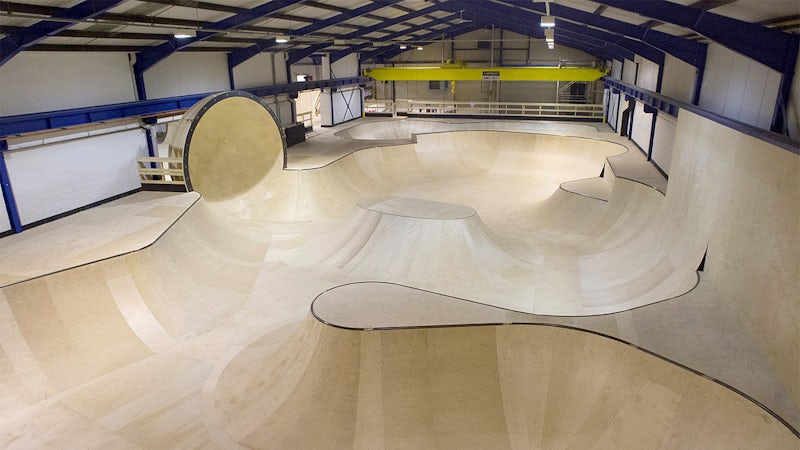Engineering firm uses NX to enhance efficiency by easily iterating between concept and detail design
Cambian Engineering Solutions uses Siemens Digital Industries Software solution to optimize design by linking to virtual reality
Cambian Engineering Solutions
Cambian Engineering Solutions applies advanced engineering principles, craftsmanship and unique processes to manufacturing in wood. The company specializes in the design, manufacture and installation of action sport facilities. It also provides its customers with bespoke architectural products, advanced engineering consultancy and machining services.
http://cambian-engineering.com- Headquarters:
- Billingshurst, West Sussex, United Kingdom
- Products:
- NX
- Industry Sector:
- Consumer products & retail
“We moved to NX because it is the whole package; modeling with simulation built in, plus an array of tools that enable us to do whatever we need to do.
Cambian Engineering Solutions
Sensational and sustainable
Members of the team at Cambian Engineering Solutions are not only designers and fabricators; they are also riders and climbers with a sound understanding of what creates the best experience when navigating a skate park or a climbing wall.
Specializing in engineered wood construction, the company uses the best quality birch ply. This is built up in layers that are bent under pressure into freeform shapes or machined to exacting tolerances on an in-house computer numerical control (CNC) machine. Cambian Engineering’s customized skate parks and climbing walls are manufactured in a dedicated workshop situated in the countryside of West Sussex, United Kingdom and transported in modular sections for final assembly on site. The company also operates as an advanced engineering consultancy and production facility specializing in wood. Sustainability is a fundamental theme: Raw materials are sourced responsibly and waste material is minimized by using a digital inventory.
A long-term fan of action sports, managing director Piers Chapman founded the company in 2011. “We work closely with our clients to create a thrilling experience for a range of skill levels and sports,” he says. As a result, Cambian Engineering’s flowing and wellformed skate parks are known for looking good and providing a smooth ride. With the design team’s 100 percent computer-aided design (CAD) approach, spare parts are readily available and with modularity, installations can easily be relocated. In addition, the company’s climbing walls incorporate innovative features such as evolving geometry that allows customers to refresh their wall architecture and offer a new challenge to returning climbers.
Such a clear focus on functionality of the architecture also presents a huge challenge to the design team since every facility is unique. “For it to be commercially viable for us to realize our concepts, it is essential that we are able to complete the detailed design in the most efficient way,” says Chapman. “For us this requires a step on from basic parametric modeling to what we term ‘adaptive modeling.’ Each project comprises tens of thousands of unique components, so our CAD and manufacturing processes need to be extremely efficient.”
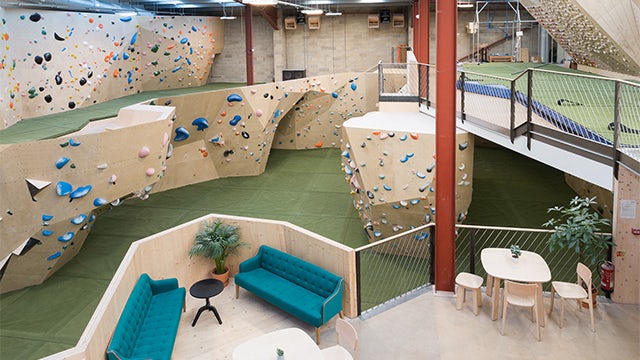
Ramping up
The design team had been using Solid Edge® software from Siemens Digital Industries Software to design the large, one-off structures they produce. “Solid Edge is really good for basic design, and the stripped back user interface makes this very efficient,” comments Chapman. “However, where geometry becomes more complicated, the required level of design intent definition was not available. We also used Solid Edge for finite element analysis, but as it is optimized for comparatively simple scenarios, we soon came up against its limitations. At the same time, because our geometry results in quite complex assemblies, our data requirements began to increase and we also wanted to automate more. In particular, we needed the capability to more widely re-use data when designing."
The answer was to transition to NX™ software. As Chapman explains: “We moved to NX because it is the whole package; modeling with simulation built in, plus an array of tools that enable us to do whatever we need to do.” The software was provided and implemented by Emixa Industry Solutions, a Siemens Digital Industries Software Platinum Partner. Emixa Industry Solutions technical team took the defaults and templates created by Cambian Engineering in Solid Edge and set them up in NX, along with new time-saving macros such as the ability to create assemblies of multiple parts in context from geometry contained in a single seed file.
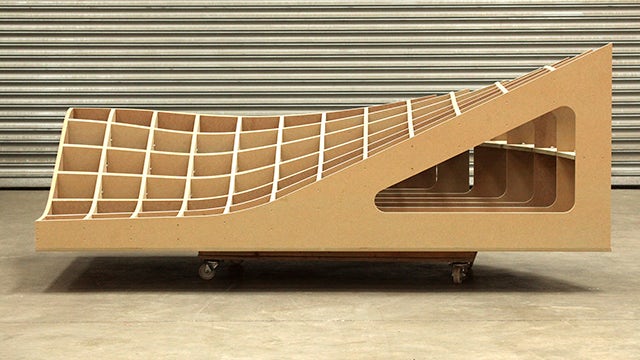
From sketch to skateboard
Indoor skate parks and climbing walls may extend over more than one floor of a building, which means they can be substantial structures and there is huge scope to be creative. Members of the team at Cambian Engineering usually begin with pencil and paper, creating an overall architectural design with an emphasis on the user experience. They think of the structure as one entire assembly, then work downwards, subdividing it into modular segments. “We identify interface requirements, then move down again to geometric input and component level,” says Chapman. “Our aim is to structure our models in the most robust way so that we can re-use design intent in different ways. The result is a top-level driven, fully associative model on the scale of a building.”
For design manager and architectural coordinator, Tim Barker, the first stage of modeling is an initial sketch in NX. “Our ideas are evolving as we move from concept into 3D and back; we do not know where we will end up. When we have the basic shape in NX we use a virtual reality headset along with physical measurement checks to anticipate how the design will turn out. For example, we may have three or four different options for a feature in the layout and we can test out the feel, then go back to the CAD model.” Through this process, a master model begins to emerge.

Constructing the climb
Barker maintains the overall master assembly, iterating with colleagues to confirm that all the modules fit together and meet various constraints. “With a lot of planning, we get the early stages right and then begin to create component level data. By ensuring this is created in a top-down approach, we can adjust on the fly. Once a given module design is frozen, we send it through to the production team for programming and machining, long before we have completed the overall design,” he says.
“I receive NX files containing reference geometry, the space envelope and connection requirements,” says Isaac Booth, project engineer. “My job is to detail the structure on which the curves of the surface or the wall fit.” Typically, these are frameworks comprising plywood ribs with connection details, all designed to be CNC machined in-house and preassembled in the firm’s workshop.
“At this stage, our modeling rationale is driven by future downstream re-use of the work,” says Booth. “Although we are constructing with wood, we use the sheet metal tools so that we can unfold the curves and machine them as flat panels, adding holes and other features. With our NX customized template a few clicks will generate a drawing with full assembly, parts list, packaging requirements, customer information and installation site details.”
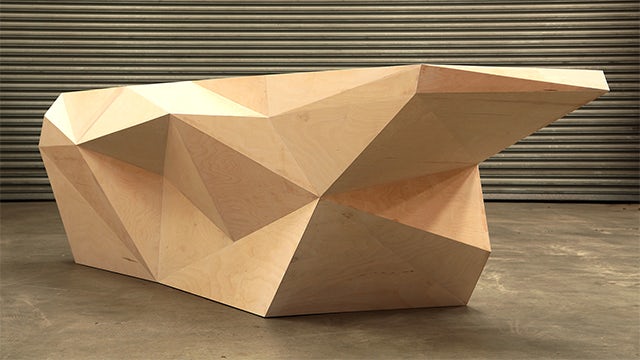
Replacing a hip with ease
There are specific named features in a skate park, such as hips (joints), quarter pipes (mini ramps), banks and bowls that are regularly featured in designs. “For fundamentally similar shapes, it is very easy to start with an existing NX master model and simply adapt the angles and radii,” comments Booth. “However, when carefully created, we can adapt existing models in a way that exceeds basic parametric modification. Even when this does not directly yield a finished assembly because the deviation in requirements is too significant, we have still saved a significant amount of time through re-use of the design intent.”
Barker adds: “Another great thing about NX is that we can copy and paste a feature to re-use and adapt the logic and work that is built-in. For me, remapping is a game changer because everything downstream will align consistently with your design intent. For example, each face of a climbing wall has a pattern of screw holes and joints and if I have spent a lot of time modeling these features on one surface I can map all the relevant information over to a new section. NX also allows us to select and remap specific elements, such as the horizontal features of a section of surface.”
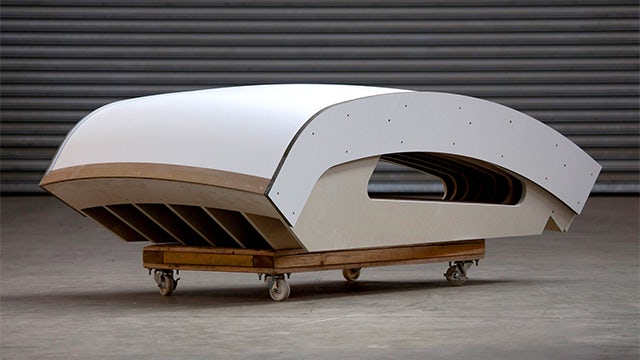
Wood is the future
One of the company’s aims is to establish wood as an engineering material by providing a comprehensive solution to design and production based on sound engineering principles rather than craft. “We often help our clients translate their designs from other materials to wood,” states Chapman. “We can be more accurate at less cost and offer a more sustainable product lifecycle.”
They are also working to transfer the technology and methods of engineering into the world of architecture, where the use of wood is more common, but the methods of working commonly are less well developed. Cambian Engineering is constantly expanding in-house knowledge and expertise. On one recent project the design team led the way in defining building geometries, coordinating data from multiple different contractors, dealing with interfaces and even analyzing deviations of as-built condition working with 3D scanners.
“We design extensively at the front end and CAD was previously a bottleneck for us,” comments Chapman. “With NX as a tool we are much more efficient. Saving time on the basics allows us to focus on the more demanding aspects of a commission and really demonstrate our value as a supplier.”
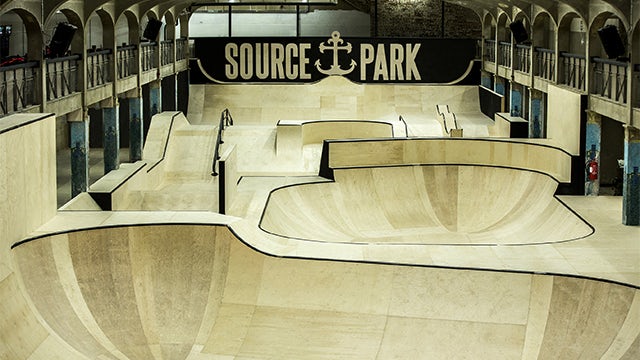
With our NX customized template a few clicks will generate a drawing with full assembly, parts list, packaging requirements, customer information and installation site details.
Cambian Engineering Solutions
